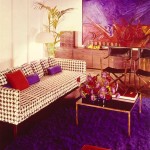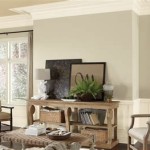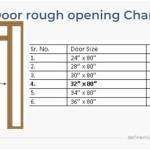20th Century Interior Design Styles: A Comprehensive Overview
The 20th century witnessed an explosion of creativity and innovation in interior design, resulting in a diverse range of styles that reflected societal shifts, technological advancements, and evolving aesthetic sensibilities. From the ornate details of Art Nouveau to the minimalist principles of Mid-Century Modern, each movement left an indelible mark on the way people shaped and decorated their living spaces. Understanding these styles provides insight into the historical context and design philosophies that continue to influence contemporary interior design.
Art Nouveau (c. 1890-1910)
Art Nouveau, meaning "New Art," emerged as a reaction against the academic art and industrial design of the late 19th century. It was characterized by its organic and flowing forms, inspired by the natural world. Designers drew heavily on floral motifs, swirling lines, and images of insects and other natural elements. The style aimed to integrate art into everyday life, blurring the lines between fine art and functional design.
Interior elements in Art Nouveau designs often featured handcrafted furniture and fixtures. Wood was a primary material, frequently shaped into graceful curves and adorned with intricate carvings. Stained glass windows were common, depicting scenes of nature and adding vibrant color to interiors. Textiles were also richly ornamented, featuring botanical prints and flowing patterns.
Color palettes favored muted, earthy tones, such as greens, browns, and ochres, accented with touches of gold, silver, and iridescent glass. Lighting fixtures were often designed as sculptural elements, mimicking natural forms like blossoming flowers. Overall, Art Nouveau interiors sought to create a harmonious and immersive environment, celebrating the beauty and complexity of the natural world.
Art Deco (c. 1920-1940)
Art Deco, short for "Arts Décoratifs," emerged in the 1920s and flourished throughout the 1930s. It was a sophisticated and glamorous style that embraced modernity, luxury, and technological progress. In contrast to the organic forms of Art Nouveau, Art Deco incorporated geometric shapes, streamlined silhouettes, and bold ornamentation. The style was heavily influenced by ancient civilizations, such as Egypt and Mesoamerica, as well as by industrial design and the machine age.
Interior spaces in Art Deco designs featured a mix of luxurious materials, including polished wood, chrome, glass, and exotic veneers. Furniture was often upholstered in plush fabrics like velvet and silk, featuring geometric patterns and stylized motifs. Mirrors were used extensively to create a sense of spaciousness and to reflect light. Lighting fixtures were designed with geometric shapes and often incorporated glass and metal.
Color palettes were bold and vibrant, featuring jewel tones like emerald green, sapphire blue, and ruby red, contrasted with black, white, and gold. Patterns were a key element, ranging from geometric shapes like chevrons and zigzags to stylized floral and animal motifs. Art Deco interiors were designed to evoke a sense of opulence, sophistication, and the spirit of the roaring twenties.
Mid-Century Modern (c. 1945-1965)
Mid-Century Modern emerged in the post-World War II era, reflecting a sense of optimism, progress, and a desire for simpler, more functional living. The style emphasized clean lines, organic forms, and a connection to nature. It was characterized by its emphasis on functionality, affordability, and accessibility.
Interiors featured open floor plans, large windows, and natural light. Furniture was designed with simple, functional shapes, often incorporating materials like wood, metal, glass, and plastic. Iconic pieces from designers like Charles and Ray Eames, Eero Saarinen, and George Nelson became hallmarks of the movement.
Color palettes incorporated both natural and vibrant hues, including earth tones, such as browns, greens, and oranges, as well as bold colors like turquoise, yellow, and red. Patterns were often geometric or abstract, adding visual interest without overwhelming the space. The goal was to create a comfortable, functional, and aesthetically pleasing environment that reflected the modern lifestyle.
Postmodernism (c. 1970s-1990s)
Postmodernism emerged as a reaction against the perceived rigidity and uniformity of modernism. It embraced eclecticism, irony, and a rejection of traditional design principles. The style was characterized by its playfulness, experimentation, and a willingness to incorporate historical and cultural references.
Interiors often featured a mix of styles, materials, and colors, creating a visually stimulating and often chaotic environment. Furniture was designed with unexpected shapes, bold colors, and unconventional materials. Architectural elements were often exaggerated or distorted, challenging traditional notions of form and function.
Color palettes were often bright and contrasting, incorporating neon colors, pastels, and metallic finishes. Patterns were bold and graphic, featuring geometric shapes, pop art imagery, and historical motifs. Postmodernism aimed to break free from the constraints of modernism and to create a more diverse and inclusive design aesthetic.
Deconstructivism (c. 1980s-Present)
Deconstructivism, while primarily an architectural movement, has significantly influenced interior design. It is characterized by its fragmented forms, asymmetry, and a deliberate disruption of traditional architectural and design conventions. Deconstructivist designs often challenge the viewer's perception of space and structure.
In interiors, deconstructivism manifests as exposed structural elements, angled walls, and fragmented surfaces. Furniture may be deconstructed into its basic components, revealing the underlying framework. The style eschews traditional notions of order and harmony, embracing instead a sense of chaos and instability.
The color palette is often muted and industrial, emphasizing raw materials like concrete, steel, and glass. Lighting is often used to highlight the fragmented forms and create dramatic shadows. Deconstructivist interiors are not necessarily comfortable or functional in a conventional sense, but they are intellectually stimulating and visually provocative.
Minimalism (c. 1960s-Present)
Minimalism, originating in the 1960s, is a design philosophy that emphasizes simplicity, functionality, and the absence of unnecessary ornamentation. It is rooted in the concept of "less is more," advocating for a reduction of elements to their essential forms.
Minimalist interiors are characterized by clean lines, uncluttered spaces, and a neutral color palette. Furniture is typically simple and functional, with a focus on quality craftsmanship and durable materials. Storage is carefully considered to minimize clutter and maintain a sense of order.
Color palettes are typically monochromatic, featuring shades of white, gray, and beige. Textures are used to add visual interest without adding unnecessary ornamentation. Natural light is also crucial, as large windows and open spaces are a signature of the design. The goal is to create a serene and uncluttered environment that is conducive to relaxation and contemplation.
Industrial Style (c. 1990s-Present)
Industrial style draws inspiration from factories, warehouses, and other industrial spaces. It embraces raw materials, exposed structural elements, and a utilitarian aesthetic. The style gained popularity in the late 20th century as people began converting abandoned industrial buildings into living spaces.
Interior feature of industrial space often include exposed brick walls, concrete floors, and exposed ductwork and piping. Furniture is often made of metal, wood, and leather, and is designed to be durable and functional. Lighting fixtures often feature bare bulbs and metal shades.
Color palettes are typically neutral and muted, featuring shades of gray, brown, and black. Accents of color can be added through artwork or accessories. Industrial interiors are often spacious and open, with a focus on functionality and simplicity. The style appeals to those who appreciate the raw, unadorned beauty of industrial materials and spaces.
Contemporary Style (Evolving)
Contemporary interior design is best understood as the "design of the moment." It is ever-evolving and influenced by various trends and design philosophies, some of which are mentioned above. While drawing on elements from various recent design movements, it can be distinguished by features such as a feeling a calm and uncluttered space.
In interior design, you will find it often uses a neutral color palette as a backdrop, clean lines, and minimalist silhouettes. The space is often open-plan and airy. Though there can be pops of accent colour, the design avoids a feeling of busyness.
Functionality, particularly in the 21st century, has remained at the forefront of the design movement. The interior design will focus on sustainability, with an integration of technology to ensure smart and energy resources can be handled efficiently and correctly.

Early 20th Century Interior Design Gid

20th Century Interiors Through The Decades Get Inspired By Our Ancestor S Homes

Six Of The Most Influential Interiors Past Century

20th Century Interiors Through The Decades Get Inspired By Our Ancestor S Homes

Modern Style Of Mid Twentieth Century Interiorholic Com

From The Archives High Styles American Design In Twentieth Century Antiques

Su 304 7 Tif Home Decor Interior Design

Early American Design Why Was It Popular In The Mid 20th Century Retro Renovation

Changing Trends In 20th Century Interior Design Part 1 1900 1960 Kings Of Chelsea

A Timeless Art Deco Interior With Classic 20th Century Influences Sbid
Related Posts








